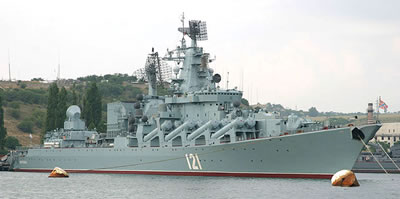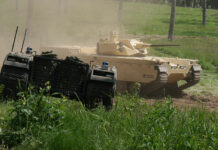Last November Iran has invited the Iraqi and Syrian presidents to Tehran. The Iranian move was a clear display of president Mahmoud Ahmadinejad’s increasingly muscular role in the Middle East, where it already has established deep influence over Syria and Lebanon. Surprisingly however, Bashar Assad preferred not to accept the invitation and look for more lucrative solutions in breaking Syria’s, US sponsored isolation- a meeting with Vladimir Putin instead. The signal was: “all bets are open” and Ahmadinejad’s dictate is not Assad’s only option.
Bashar Asasd’s unexpected move coincided perfectly, with an effort to boost Moscow’s clout in the Middle East, when Russian President Vladimir Putin held talks, last Tuesday, December 12, with his visiting Syrian counterpart, Bashar al-Assad, aimed at strengthening bilateral relations.
Amid the ongoing debate, Russia continues to develop political and economic ties with both countries. Putin wishes to stamp Russian authority onto the international stage, especially the volatile Middle East, in which Bush’s bungling strategy and Israel’s poor showing in the Hezbollah war last summer, has already weakened US ‘Pax Americana’ vision substantially.
In fact, as had been revealed recently, Russia, Iran and Syria have already entered a defence pact aiming at Moscow’s ambitions to the process of altering the balance of power in the entire Middle East. Russia’s own part in this pact has been kept relatively secret for a long time.

Syria has clinched a deal with Moscow early last year, in which Russia agreed to write off more than 70 percent of a multi-billion dollar debt owed from the Cold War era, when Damascus was a stounch ally and arms customer of the Soviet Union. Bi-lateral relations between Moscow and Damascus have considerably warmed since early 2006. A Russian military delegation has been touring military bases and headquarters in Syria as part of an effort to increase cooperation with the regime of President Bashar Assad. The delegation, led by Chief of Staff Gen. Yuri Baluyevsky, has met his counterpart, Gen. Ali Habib, as well as senior Syrian commanders and defence officials. Western intelligence experts estimate that up to 2,000 Russian military advisors, under the command of Lieutenant General Vassily Jakushev, 60, the former commander-in-chief of the country’s Far East military district, are currently serving in the Syrian military. Russian officers hold teaching positions at Syria’s military officer training academy.
Currently , Damascus’ new shopping list for weapons backed by half a billion dollars put up by Iran – in cash if needed – has been granted by President Ahmadinejad to purchase modern Russian arms. Among this, intelligence sources claim, Damascus was advised in advance that certain surface systems on request, which were formerly rejected, would now also become available. However, while the transaction could include sophisticated Tor-M1 systems, supplies of which began reaching Iran last month, Syria’s request will remain on hold until these were completed.
Together with thousands of AT-14 anti-tank and SA 5 Gammon anti-air missiles, Damascus also wants to commission Russian military industry to upgrade all 4,500 of its outdated Soviet-era T-62, T-72 and T-80 tanks. Israel’s head of research in military intelligence, Brig-Gen Yossi Baidetz was referring to this huge Russian-Syrian arms deal bankrolled by Iran, in his presentation to the Knesset committee last week, which made headlines next day in the media.
A highly interesting development was revealed a few months ago, when sources related to Israeli intelligence revealed, probably through satellite reconnaissance, having for some time observed the Russians dredging the port of TARTUS in northern Syria. Last June, the Russian newspaper Kommersant surprisingly unveiled Russian secret plans to upgrade the servicing station it has maintained since Soviet times at the Syrian port of Tartus. According to the paper, the short-term goal is to enable Russian warships to dock at Tartus, with a view to its future transformation into a fully-fledged Russian Mediterranean Fleet naval base. Kommersant’s unidentified source in the General Staff said the Navy plans eventually to relocate the bulk of the Black Sea Fleet, currently still stationed in Sevastopol, to Syria.
Not surprisingly, Russian officials quickly denied these reports, but insistent facts nevertheless remain. According to these reports, at the Tartus naval base, covering an area of almost a hundred acres, about 300 men already serve under the command of sea captain Vladimir Gudkov, a former officer in Russia’s North Sea fleet. Satellite photos reveal that Russia has already undertaken to deepen the port to permit the docking of its largest fighting ships, and even build a stationary mooring place. Moscow has also begun work on a new mooring at the Syrian port of Latakia, which could also be used in the future to base fighting ships. In this respect it is worth noting that the Black Sea Fleet Project 1164 Moskva guide missile cruiser called on Latakia in February 2006.
In fact, Kommersant got its information about the work at Tartus from no less an authority than Vladimir Zimin, the Russian Embassy’s senior counselor for economic issues in Syria. Tartus port is being prepared as the base for a fully fledged Russian naval squadron. Anti-air defence for these forces will be upgraded to the new S-300PMU2 Favorit (SA-20) SAM systems and no doubt, the Thor M-1 deal will become part of this endeavour.
It is worth recalling that permanent access to the Mediterranean has been the dream of Russia’s rulers for several centuries. Already in the second half of the 18th century for operations against Turkey, squadrons of the Baltic Fleet were sent to the Mediterranean. The rebirth of Russia’s naval presence in the Mediterranean began in the 1950s with the aim of countering NATO forces and to support Moscow’s interests in the Middle East. In 1958, a permanent base for Soviet submarines was established at Vlyora in Albania, but in spite of the establishment of close relations with a range of middle eastern Arabic states, the Soviet Union never acquired a permanent naval base in this region, and the powerful Soviet naval forces in the Mediterranean (Fifth Operational Squadron) had to anchor at small plots in the neutral waters off the coast of Tunisia and Libya. Only in 1984 were servicing stations at Tartus and Latakia, established for occasional servicing calls by Soviet warships.
But the recent constant presence of major Russian fleet units in the Mediterranean is nothing new. On 9 February, this year, the Russian Black Sea Fleet Project 1164 Moskva guide missile cruiser RFS Moskva, under command of Admiral Vladimir Vasilyevich Masorin, Commander in Chief Russian Naval Forces, docked alongside NATO vessels in Messina, Sicily as part of a bi-lateral visit with Italian authorities. Two weeks later, the Moskva and the Naval Commando carrier Azov docked shortly at Latakiye port in northern Syria, the first official visit of Russian warships to Syria in 10 years.
The appearance of Russian ships in Tartus for any period of time would represent a dramatic reinforcement of Russia’s naval potential in the Mediterranean Sea, even when compared to the cold war period. Syria’s president Bashar Assad may yet present Vladimir Putin with a return ticket for Russia’s longed strategic ambitions in the Middle East.


















